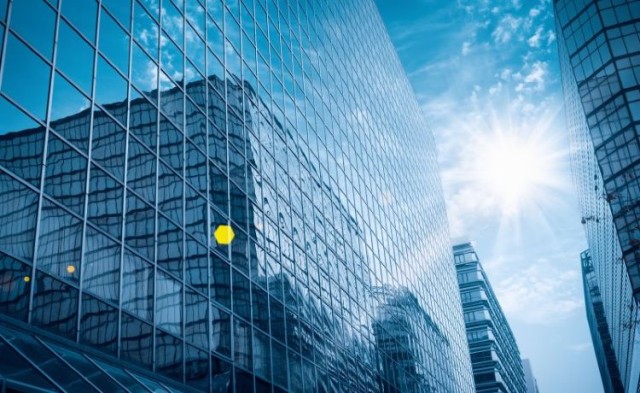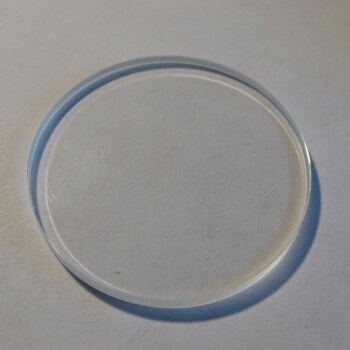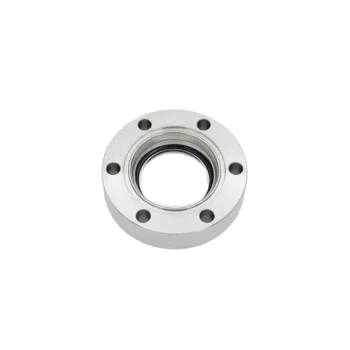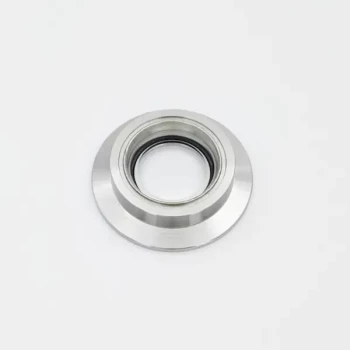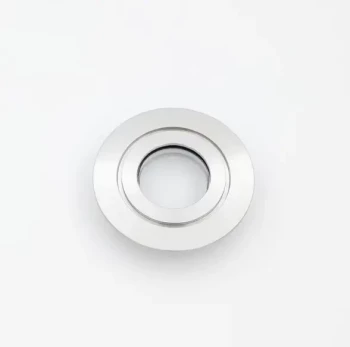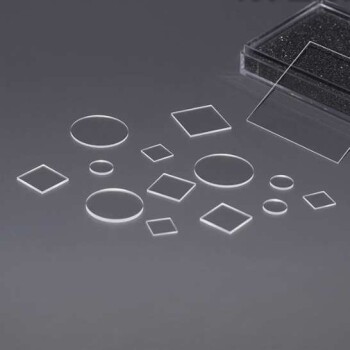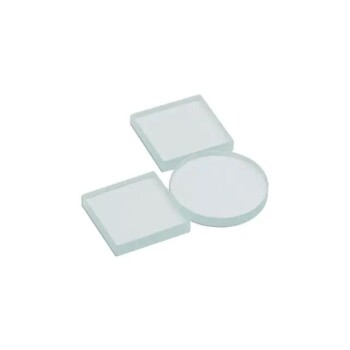Methods of Vacuum Coating on Architectural Glass
Applications in Architectural Lighting and Aesthetics
Architectural glass coatings offer a myriad of applications in enhancing both energy efficiency and aesthetic appeal. These coatings are instrumental in reducing the overall energy consumption of buildings, particularly through their superior heat insulation and thermal insulation capabilities. For instance, Low-E (Low-Emissivity) coated glass and heat-reflective coated glass are frequently employed in modern construction to mitigate heat loss and decrease the reliance on air-conditioning systems.
Low-E coated glass, in particular, is renowned for its ability to reflect far-infrared rays, thereby minimizing heat transfer between indoor and outdoor environments. This not only enhances the building's thermal insulation performance but also contributes to significant energy savings by reducing heating and cooling demands. Heat-reflective coated glass, on the other hand, is designed to reflect a substantial portion of solar radiation, thereby keeping the interior cooler and reducing the load on air-conditioning systems.
Moreover, these coatings can be tailored to achieve specific aesthetic outcomes. By varying the thickness and composition of the coating, architects can create glass surfaces that exhibit different colors and reflective properties. This versatility allows for the creation of visually striking facades that not only enhance the building's appearance but also contribute to its energy efficiency.
In summary, the application of vacuum-coated architectural glass extends beyond mere functionality; it integrates seamlessly with architectural design to deliver buildings that are both energy-efficient and aesthetically pleasing.
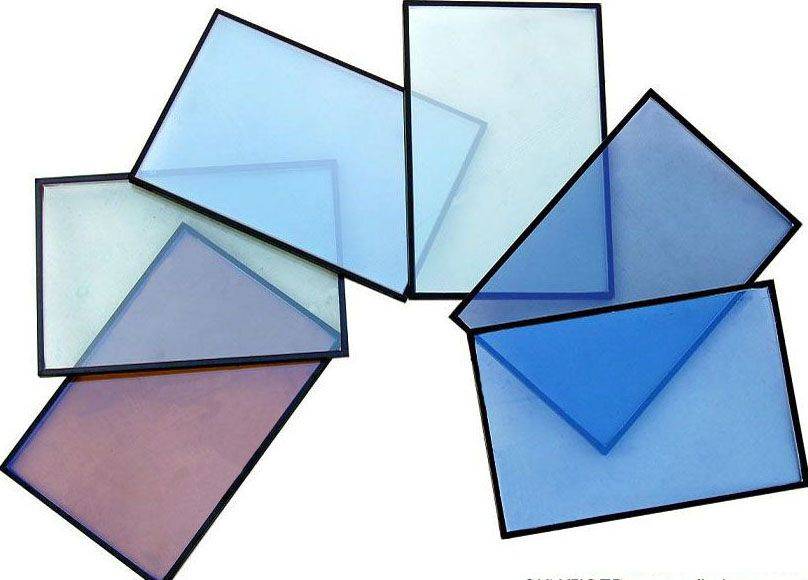
Application in Building Lighting and Aesthetics
Coated glass not only enhances the thermal performance of buildings but also significantly contributes to energy efficiency through its superior light transmission properties. By allowing a high percentage of visible light to pass through while blocking infrared and ultraviolet rays, coated glass maximizes the use of natural daylight within the building. This natural lighting reduces the reliance on artificial lighting, leading to substantial energy savings.
Moreover, the aesthetic potential of coated glass is immense. This innovative material can be engineered to exhibit a variety of colors and reflective effects, offering architects and designers a palette of creative possibilities. Whether it's a sleek, mirror-like finish or a vibrant, multi-hued facade, coated glass can transform the exterior appearance of buildings, making them stand out in the urban landscape.
| Feature | Description |
|---|---|
| Light Transmission | High visible light transmission rate, reducing need for artificial lighting. |
| Heat Insulation | Effective in blocking infrared rays, enhancing thermal insulation. |
| Aesthetic Variety | Ability to display different colors and reflective effects, enhancing architectural design flexibility. |
The combination of functional benefits and aesthetic versatility makes coated glass an indispensable material in modern architectural design, balancing form and function seamlessly.
Application in Special Environment Buildings
In high-humidity environments, the film layer on the surface of coated glass serves as a robust barrier against moisture and corrosion. This protective layer not only mitigates the ingress of water vapor but also resists chemical attacks, thereby significantly extending the service life of the glass. For instance, in coastal regions where salt spray is prevalent, coated glass can withstand the harsh conditions, ensuring the structural integrity and aesthetic appeal of the building facade.
In high-altitude areas, where the intensity of ultraviolet (UV) radiation is significantly higher, coated glass plays a crucial role in safeguarding both occupants and interior furnishings. By effectively blocking UV rays, these specialized glass coatings prevent the degradation of indoor materials, such as textiles, plastics, and wood, which are susceptible to UV damage. This not only preserves the visual and functional quality of these items but also enhances the overall durability of the building's interior.
Moreover, the application of coated glass in extreme weather conditions, such as heavy rainfall or snowfall, demonstrates its versatility. The hydrophobic properties of certain coatings can repel water, reducing the risk of water stains and maintaining clear visibility through the glass. This is particularly advantageous in regions prone to severe weather events, where maintaining a pristine appearance and functionality is paramount.
In summary, the application of vacuum-coated architectural glass in special environment buildings offers a comprehensive solution to the unique challenges posed by high humidity and high-altitude conditions. By enhancing durability, protecting against UV damage, and maintaining aesthetic integrity, these coatings contribute to the longevity and resilience of buildings in diverse environmental settings.
Functions of Vacuum Coated Architectural Glass
Insulation Function
Architectural glass coating plays a pivotal role in enhancing the thermal insulation performance of buildings. By applying specialized coatings, glass can effectively mitigate the exchange of heat between indoor and outdoor environments. These coatings are engineered to reflect and absorb infrared rays, which are the primary carriers of heat. This dual action prevents the transfer of heat from the side with a higher temperature to the side with a lower temperature, thereby maintaining a more stable indoor climate.
The effectiveness of these coatings is particularly pronounced in regions with extreme temperature variations. For instance, in hot climates, the reflective properties of coated glass can significantly reduce the amount of solar heat entering the building, thereby decreasing the load on air conditioning systems. Conversely, in colder regions, the insulation provided by these coatings helps retain indoor heat, reducing the need for heating.
Moreover, the use of low-emissivity (Low-E) coated glass and heat-reflective coated glass has become commonplace in modern architecture. These materials not only enhance thermal insulation but also contribute to overall energy efficiency by minimizing heat loss and reducing the demand for heating and cooling systems. The result is a more sustainable building design that offers both comfort and cost savings.
UV Protection
Architectural glass coatings are designed to significantly reduce the transmission of harmful ultraviolet (UV) rays. These coatings are engineered to block over 90% of UV radiation, thereby safeguarding both the indoor environment and the occupants' health.
The effectiveness of these coatings is particularly crucial in high-altitude regions where the intensity of UV rays is higher. By minimizing UV penetration, coated glass helps to prevent the degradation of indoor materials, such as furniture and flooring, which can be susceptible to fading and deterioration over time.
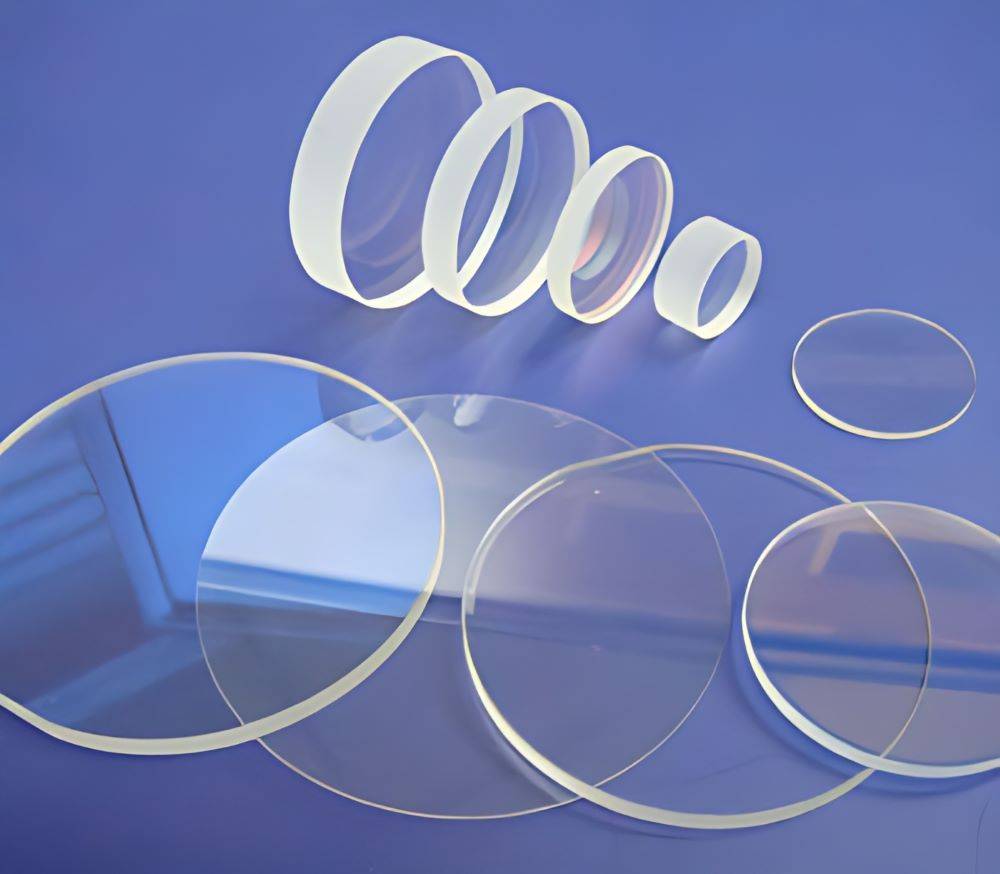
Moreover, these coatings contribute to the overall energy efficiency of buildings by reducing the need for additional UV protection measures, such as blinds or curtains, which can obstruct natural light and views. This dual benefit enhances the aesthetic and functional aspects of architectural design.
| Aspect | Benefit |
|---|---|
| UV Blocking | Blocks over 90% of UV rays, protecting indoor materials and occupants. |
| High-Altitude Use | Particularly effective in regions with high UV intensity. |
| Material Protection | Prevents fading and deterioration of indoor materials. |
| Energy Efficiency | Reduces the need for additional UV protection measures, enhancing aesthetics. |
Improvement of Durability
The film layer of coated glass significantly enhances the surface hardness of the glass, making it more resistant to scratches and mechanical damage. This improvement is particularly beneficial in environments where the glass is subject to frequent physical contact or abrasive conditions. The enhanced scratch resistance ensures that the glass maintains its aesthetic appeal and functional integrity over time.
In addition to its mechanical benefits, coated glass exhibits a notable degree of corrosion resistance. This characteristic is particularly advantageous in environments prone to high humidity, salt spray, or chemical exposure. The film layer acts as a protective barrier, mitigating the effects of corrosive elements and extending the overall service life of the glass. This durability is crucial for maintaining the structural and aesthetic integrity of architectural glass in various climates and conditions.
Moreover, the corrosion resistance of coated glass is not limited to environmental factors. It also provides protection against chemical attacks, which can be common in industrial or urban settings. By reducing the rate at which the glass deteriorates, the coating helps to preserve the glass's performance and appearance, thereby reducing maintenance costs and downtime.
In summary, the film layer of coated glass not only enhances the surface hardness and scratch resistance but also offers significant corrosion resistance, extending the service life of the glass in diverse and challenging environments.
Improvement of Optical Properties
The optical properties of coated glass can be fine-tuned through the strategic application of specific coatings, leading to enhanced transmittance and reduced reflection. This adjustment results in a more uniform and softer distribution of light within indoor spaces, which significantly improves the visibility and clarity of exhibits. The reduction in glare and reflection not only benefits the visual experience but also contributes to energy efficiency by minimizing the need for artificial lighting.
Moreover, the optical enhancements provided by these coatings can also affect the aesthetic appeal of architectural glass. By controlling the light transmission and reflection, architects can achieve a variety of visual effects, from a mirror-like finish to a frosted appearance, providing greater design flexibility. This not only enhances the building's aesthetic but also its functionality, making it more adaptable to different lighting conditions and environmental factors.
In summary, the improvement of optical properties through vacuum coating on architectural glass offers a dual benefit: enhancing the visual clarity and comfort within indoor environments while also contributing to the overall energy efficiency and aesthetic versatility of the building.
Target Materials for Vacuum Coating
Silver Target
In the production of low-e coated glass (Low-E glass), silver target stands out as a pivotal coating material. Silver's unique properties, particularly its exceptionally low emissivity, make it indispensable in the manufacturing process. This low emissivity allows silver to efficiently reflect far-infrared rays, which are primarily responsible for heat transfer. By doing so, silver effectively mitigates the loss of thermal energy, thereby enhancing the glass's low-e performance.
The significance of silver in achieving the desired thermal insulation cannot be overstated. When integrated into the glass coating, silver not only reflects heat but also contributes to the overall energy efficiency of the building. This dual role ensures that the glass not only retains heat during colder months but also repels it during warmer seasons, significantly reducing the building's energy consumption.
Moreover, the use of silver targets in vacuum coating processes aligns seamlessly with the broader objectives of sustainable architecture. By enhancing the thermal performance of glass, silver-coated glass aids in creating more energy-efficient buildings, which is a cornerstone of modern architectural design. This integration underscores the critical role of advanced materials in pushing the boundaries of what is possible in building insulation and energy conservation.
Fluorine-doped Tin Oxide Targets
Fluorine-doped tin oxide (FTO) targets are pivotal in the production of Low-E (low-emissivity) glass, a material renowned for its energy-saving properties in architectural applications. The FTO film layer, deposited through vacuum coating techniques, exhibits exceptional electrical conductivity and robust chemical stability. This dual functionality is crucial for enhancing the glass's performance in various environmental conditions.
The electrical conductivity of FTO targets allows the glass to efficiently manage thermal energy, reducing heat transfer through the glass surface. This is particularly beneficial in maintaining indoor temperature stability, thereby lowering heating and cooling costs. The chemical stability of the FTO layer ensures that the glass maintains its performance over time, resisting degradation from environmental factors such as moisture and UV radiation.
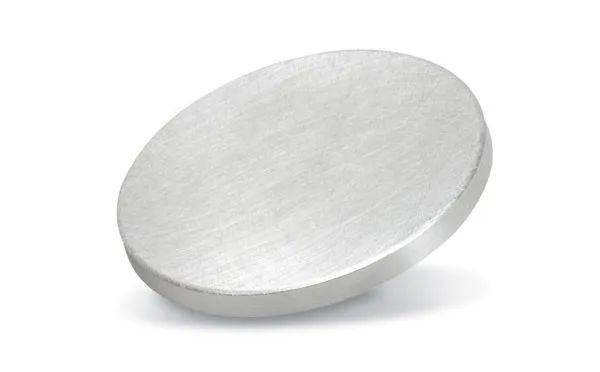
In summary, FTO targets are not just a common material but a cornerstone in the manufacturing of Low-E glass, contributing significantly to the glass's ability to provide energy efficiency, durability, and long-term performance in architectural settings.
Metal Oxide Targets
Titanium dioxide and zinc oxide targets play a crucial role in the vacuum coating process for architectural glass, enabling the creation of thin films with multifaceted functionalities. These metal oxides are particularly renowned for their ability to enhance the UV protection capabilities of the glass, effectively blocking a significant portion of harmful ultraviolet radiation. This not only safeguards the indoor environment and occupants from UV-induced damage but also mitigates the aging of interior furnishings and materials.
In addition to their UV-blocking properties, titanium dioxide and zinc oxide films offer self-cleaning effects. This means that the coated glass surfaces can repel water, dirt, and organic contaminants more effectively, reducing the need for frequent cleaning and maintenance. The hydrophilic nature of these films allows water to spread evenly across the surface, washing away dirt and grime with minimal effort.
Moreover, the incorporation of these metal oxides into the coating process enhances the overall durability and performance of the glass. The thin films formed by titanium dioxide and zinc oxide targets improve the glass's scratch resistance and surface hardness, making it more resilient to everyday wear and tear. This added durability extends the service life of the glass, ensuring that it maintains its aesthetic and functional integrity over time.
The versatility of these metal oxide targets extends beyond just UV protection and self-cleaning effects. They can also contribute to the optical properties of the glass, such as enhancing light transmittance and reducing glare. This makes the coated glass ideal for applications where optimal lighting conditions are crucial, such as in museums or art galleries, where the preservation of exhibits is paramount.
In summary, the use of titanium dioxide and zinc oxide targets in architectural glass coating provides a comprehensive solution that enhances UV protection, offers self-cleaning benefits, improves durability, and optimizes optical properties. These multifunctional films not only elevate the performance of the glass but also contribute to the overall efficiency and longevity of the building's envelope.
Other Targets
Metal targets such as aluminum and chromium play a significant role in the vacuum coating of architectural glass. Aluminum, in particular, is widely used due to its ability to form a reflective film layer when sputtered onto the glass surface. This reflective film is crucial in the production of heat-reflective coated glass, which is essential for reducing heat gain and maintaining indoor comfort in buildings.
Aluminum targets offer several advantages in this application. Firstly, the reflective film they create is highly effective at reflecting infrared radiation, thereby reducing the transfer of heat from the exterior to the interior of buildings. This characteristic is particularly beneficial in regions with high solar exposure, where the need for air conditioning is substantial. By minimizing heat transfer, aluminum-coated glass can significantly lower energy consumption and reduce the load on HVAC systems.
In addition to its thermal performance, the reflective nature of aluminum coatings also enhances the aesthetic appeal of buildings. The reflective film can be tailored to produce various shades and levels of reflectivity, offering architects and designers greater flexibility in their exterior designs. This not only improves the visual appeal of the building but also contributes to its overall energy efficiency.
Chromium, another metal target, also finds applications in architectural glass coating. Chromium coatings provide excellent protection against corrosion and wear, enhancing the durability of the glass. This makes chromium-coated glass particularly suitable for use in harsh environments, such as coastal areas or industrial settings, where the risk of corrosion is high.
The use of these metal targets extends beyond just aluminum and chromium. Other metals, such as copper and nickel, are also employed to create specialized coatings that offer additional functionalities, such as improved thermal conductivity or enhanced mechanical strength. These diverse metal targets allow for a wide range of customization options, enabling the creation of glass coatings that meet specific architectural and performance requirements.
In summary, the selection of metal targets like aluminum and chromium for vacuum coating on architectural glass is driven by their unique properties and the significant benefits they offer in terms of thermal performance, durability, and aesthetic enhancement. These materials play a crucial role in the development of advanced glass coatings that contribute to the energy efficiency and longevity of modern buildings.
Related Products
- Inclined Rotary Plasma Enhanced Chemical Vapor Deposition PECVD Equipment Tube Furnace Machine
- 400-700nm Wavelength Anti Reflective AR Coating Glass
- CF Ultra-High Vacuum Observation Window Window Flange High Borosilicate Glass Sight Glass
- KF Ultra-High Vacuum Observation Window 304 Stainless Steel Flange High Borosilicate Glass Sight Glass
- KF Ultra-High Vacuum Observation Window Stainless Steel Flange Sapphire Glass Sight Glass
Related Articles
- An Introduction to Chemical Vapor Deposition (CVD)
- Advantages and Disadvantages of Chemical Vapor Deposition (CVD)
- Plasma Enhanced Chemical Vapor Deposition (PECVD): A Comprehensive Guide
- Why PECVD is Essential for Microelectronic Device Fabrication
- Comparing the Performance of PECVD and HPCVD in Coating Applications
